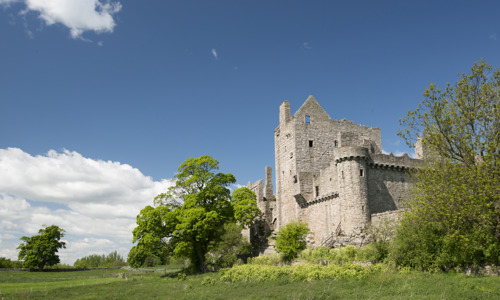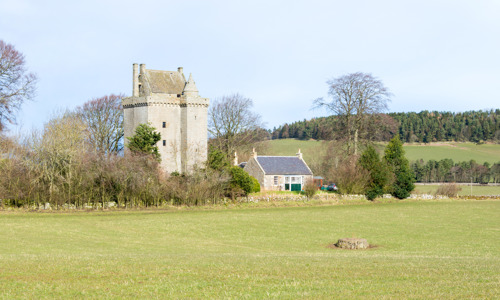History
James II acquired the lands of Ravenscraig Castle in 1460. Work immediately began on construction of a residence for his wife, Queen Mary of Gueldres.
Within five months, James II was killed by one of his own guns at the siege of Roxburgh. Mary pressed on with the castle’s construction regardless, and in 1461 it was completed to such a state where her house staff were able to stay there for 25 days.
It’s unclear whether Mary herself stayed at the castle before her death in 1463. She never saw a finished castle at Ravenscraig – the only parts completed by her death were the east tower and foundations of a central range.
Mary’s son, James III, granted the still-unfinished castle to William Sinclair in 1470. It was compensation for resigning the earldom of Orkney and lordship of Shetland to the Crown. He became earl of Caithness at the same time.
Household to stronghold
As a royal household, Ravenscraig was certainly built with defence in mind. It’s situated on a promontory into the Firth of Forth, fronted by a large rock-cut ditch.
But the Sinclairs transformed it into the well-defended fort we see today. Over the central vaults, where Mary would have built her great hall, the Sinclairs instead installed a gun platform in the mid-1500s.
Thanks to its massive, 3.5m-thick frontal wall and many gun holes, Ravenscraig is sometimes considered more an artillery fort than castle, though its overtly martial appearance is the result of many modifications rather than a single plan. It may have been built to help defend the Firth of Forth from English invasion.
A strong residence
The castle’s central entrance passage was approached by bridge over the deep rock-cut ditch. Inside was a guardroom, the rest of the central block taken up by cellars.
The west tower housed the owner’s four-floor apartment. Access was at the first floor, via a forestair rising up from a small, secure courtyard behind. The east tower housed the well and apartments for the owner’s senior officials. The courtyard housed the kitchen, bakehouse and other offices.














